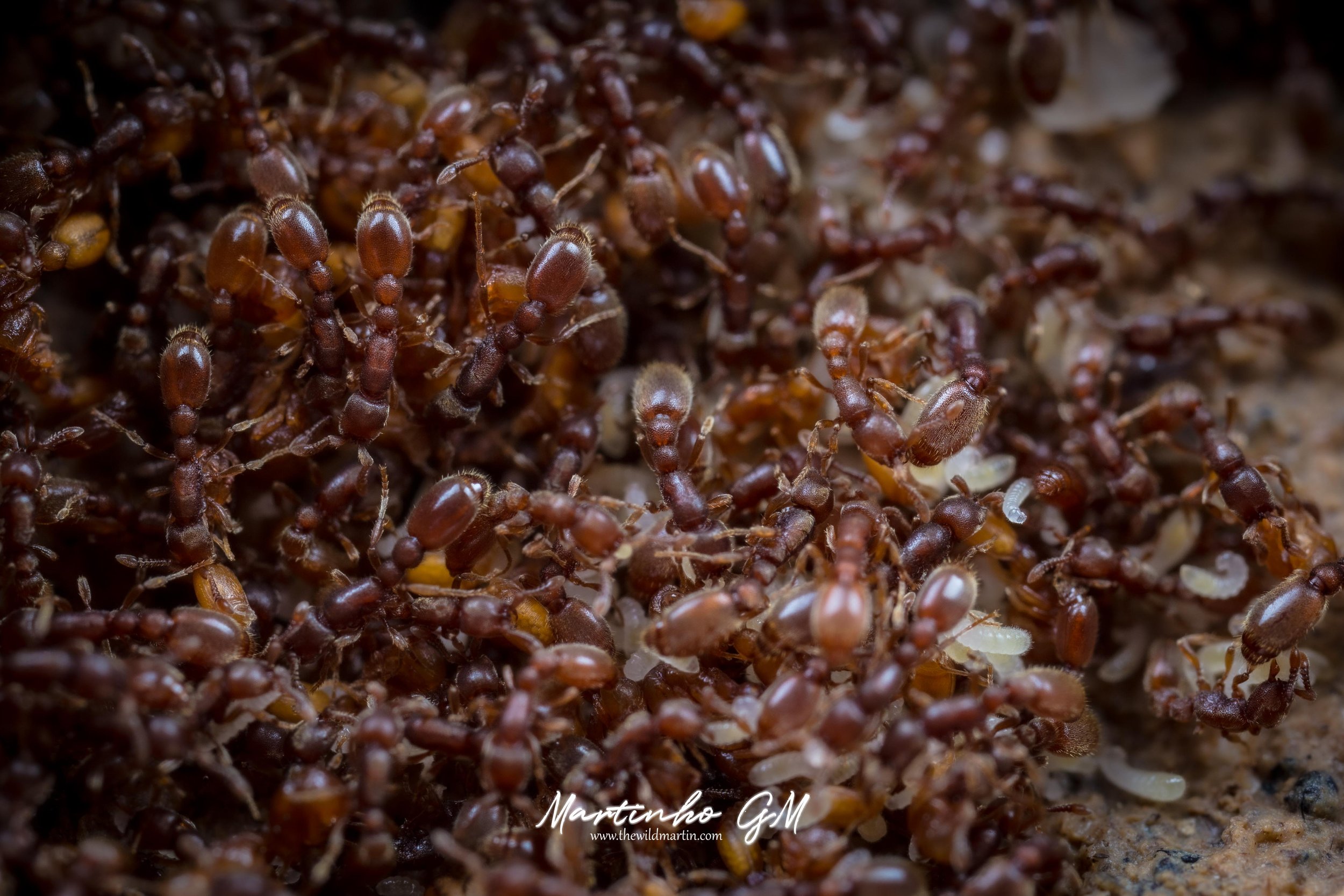Ooceraea
also known as Clonal Raider Ants. Ooceraea biroi is perhaps the best studied doryline species. The army ants Eciton and Dorylus have been extensively researched in the field, but their huge colonies are exceptionally difficult to manipulate in laboratory conditions. In contrast, O. biroi is a species much more amenable to experimental manipulation and has been the focal organism for multiple published laboratory-based studies.
O. biroi is a clonal species where all workers in a colony have reproductive potential and multiple individuals are active egg layers. Brood is synchronized and alternating cycles of reproductive and foraging phases occur, much like in Eciton. Much like most other dorylines, Ooceraea biroi is a specialist predator on other ants’ brood, although it can attack other soft-bodied insects. The workers are blind and, like many dorylines, rely solely on chemical communication. A recent study found that O. biroi has the largest number of odorant receptor genes of any insect sequenced.
The colonies number between a hundred and several hundred individuals. O. biroi is also a ‘tramp species’ whose native range is likely limited to mainland southeast Asia, but it has been established in numerous tropical islands throughout the world, including Japan, Hawaii, Madagascar and Seychelles, and the West Indies.
Ooceraea biroi colony
Ooceraea biroi brood chamber filled with larvae
Ooceraea biroi colony
Ooceraea biroi colony
Ooceraea biroi brood chamber filled with pupae
Ooceraea biroi worker
Ooceraea biroi workers
Ooceraea biroi worker







